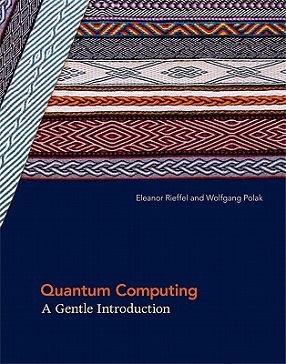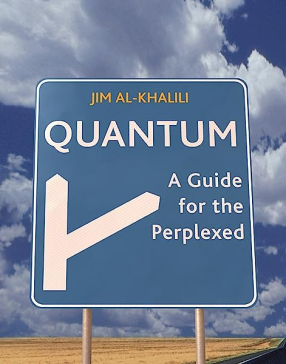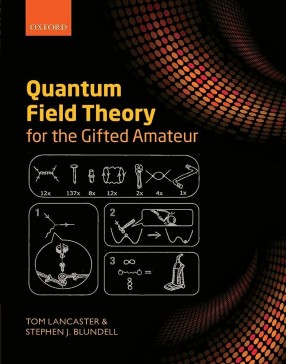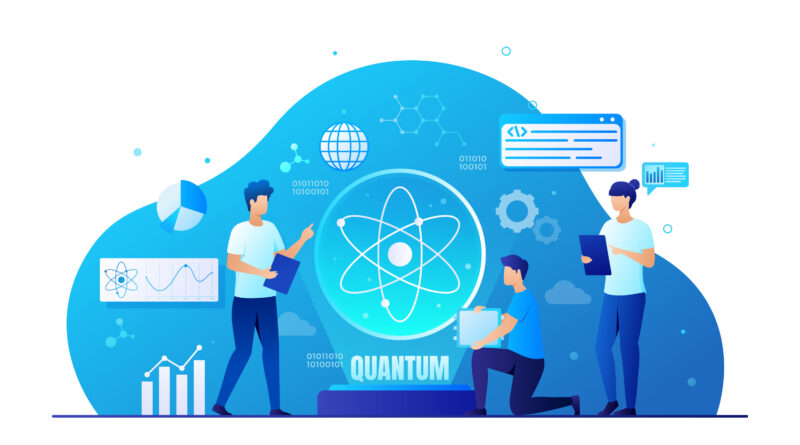Quantum Computing: Unveiling the Top Books for Quantum Enthusiasts
Today, we’re going to look at how books can help you understand the mind-boggling field of quantum computing and the fascinating world of quantum computing. Now, you might be wondering what quantum computing is exactly. Consider it a cutting-edge technology that goes beyond conventional computing. It performs calculations that would require centuries of effort from even the most powerful supercomputers by utilizing the mind-boggling properties of quantum mechanics. Doesn’t that sound impressive?
From drug discovery and cryptography to optimizing complex logistics and artificial intelligence, quantum computing has been making waves in a variety of fields. It’s changing how we solve problems and opening up new possibilities that we never thought were possible.
Books have a special advantage when it comes to learning. You can delve into quantum computing’s theories, principles, and practical applications with their depth. You can read the pages at your own pace, highlight important concepts, and truly absorb the information. In addition, they provide a more comprehensive understanding because they present a viewpoint and style that are distinct from those of online articles or videos.
Having a carefully curated list of recommended books can make your learning experience easier and more enjoyable, whether you are a quantum enthusiast or someone eager to delve into this cutting-edge field. So, sit down with a book, grab a cup of coffee, and let’s explore quantum computing together!
“Quantum Computing: A Gentle Introduction” by Eleanor Rieffel and Wolfgang Polak

“Quantum Computing: A Gentle Introduction” by Eleanor Rieffel and Wolfgang Polak. This fantastic book is the result of a collaboration between two experts who share their extensive expertise and knowledge.
A. Overview of the book, including its authors and their expertise in the field.
Famous quantum physicist Eleanor Rieffel has made significant contributions to the field. She has been actively involved in research and has published numerous papers in prestigious scientific journals due to her extensive knowledge of quantum computing. In contrast, Wolfgang Polak is an accomplished computer scientist who focuses on quantum computing. They make a dynamic duo when they work together, combining their expertise to produce a book that is insightful and easy to read.
B. Key topics covered in the book, such as quantum algorithms, quantum gates, and quantum hardware.
This book explains a lot of the fundamental ideas that are necessary to understand quantum computing. Some of the most important things you can expect are as follows:
Quantum Algorithms
This book will take you on a journey into the world of quantum algorithms, learning about how they differ from classical algorithms and how they might be used to solve more difficult problems more quickly.
The Quantum Gates
You will become familiar with quantum gates, which are the fundamental elements of quantum computation. The authors explain how these gates make it possible to run quantum algorithms and manipulate quantum states.
Quantum Hardware
Quantum computing’s physical aspects are also covered in this book. You will learn about superconducting qubits, trapped ions, and topological qubits, as well as the difficulties associated with building and scaling quantum systems. You will also gain an understanding of the various kinds of quantum hardware.
“Quantum Computerization: A Gentle Introduction” is a great place to start for anyone interested in learning more about quantum computing because it is both comprehensive and easy to understand for newcomers.
“Quantum Computing for Computer Scientists” by Noson S. Yanofsky and Mirco A. Mannucci

“Quantum Computing for Computer Scientists” by Noson S. Yanofsky and Mirco A. Mannucci. This book is a gem for those with a background in computer science who want to explore the fascinating realm of quantum computing.
A. Overview of the book and the authors’ background in both Quantum computing and computer science.
Noson S. Yanofsky is an outstanding figure in both quantum processing and software engineering. Yanofsky has a strong theoretical physics background and a PhD in computer science, so he has a unique perspective on the topic. A comprehensive resource that bridges the gap between quantum computing and computer science was created in collaboration with Yanofsky by experienced computer scientist Mirco A. Mannucci, who specializes in quantum algorithms.
B. The book focus on the intersection of quantum computing and computer science, including quantum algorithms and complexity theory.
“Quantum Processing for Computer Scientist” focus on the crossing point of quantum computing and software engineering, providing readers with significant experiences in the connection between the two fields. The book delves into a wide range of subjects, including:
- Quantum Algorithms: Yanofsky and Mannucci delve into the realm of quantum algorithms, demonstrating their potential to solve problems more effectively and describing how they differ from classical algorithms. Quantum Fourier transform quantum search algorithms, and other topics are covered in depth.
- Complexity Theory: The book digs into the intricacy hypothesis, exploring the computational force of quantum computers and the effect of quantum mechanics on how we might interpret calculation. Readers will investigate the idea of quantum intricacy classes and the limits of quantum computation.
C. Highlight the practical applications of quantum computing covered in the book, such as cryptography and optimization.
Beyond theoretical discussions, “Quantum Computing for Computer Scientists” focuses on the practical applications of quantum computing. The authors provide computer scientists with a clear understanding of how this emerging technology can impact their field and open up new possibilities by examining the practical applications of quantum computing.
The authors shed light on the potential for quantum computing to transform numerous fields, including:
- Cryptography: The book examines the effects of quantum computing on cryptography, focusing on the development of quantum-resistant encryption algorithms and the potential threats it poses to conventional cryptographic systems.
- Optimization: Mannucci and Yanofsky talk about how combinatorial optimization and large-scale optimization can be optimized using quantum computing. They show how quantum algorithms might be able to find the best solutions more quickly than traditional methods.
“Quantum Registering for Computer Scientist” is an important resource for those with a foundation in software engineering who are quick to investigate the captivating universe of quantum processing. This book gives readers the knowledge they need to navigate the intersection of quantum computing and computer science by focusing on quantum algorithms, complexity theory, and practical applications.
“Quantum: A Guide for the Perplexed” by Jim Al-Khalili

Let’s take a look at the captivating “Quantum: A Guide for the Perplexed” by Jim Al-Khalili is a book. Anyone who has ever struggled to comprehend the perplexing ideas of quantum physics will find this book to be a treasure collection. But don’t worry! By providing clarity and dissecting the complexity, this book is here to save the day.
A. Overview of the book and the authors’ expertise in quantum physics and science communication.
Jim Al-Khalili is an eminent physicist with a deep understanding of quantum physics. With his skill and passion for science correspondence, he has a momentous capacity to work on complex thoughts and make them open to a wide crowd. Al-Khalili has composed various books and hosted well-known science programs, making him a trusted guide in unwinding the secrets of the quantum world.
B. The book aims to make quantum physics more approachable.
“Quantum: A Guide for the Perplexed” is follows to simplify quantum physics for readers who are intimidated by the subject. Al-Khalili is aware that the unreasonable principles and abstract nature of quantum physics can be a bit overwhelming.
The book’s Aim of making quantum physics more accessible is illustrated in the following key points:
- Approach Free of Jargon: Al-Khalili takes great care not to avoid excessive technical language or jargon. He knows that writing in simple, everyday language can make it easier for readers to understand the ideas and avoid confusion.
- Step-by-Step Explanation: Beginning with the fundamentals and gradually expanding upon them, the author takes the reader on a journey. He presents quantum concepts and phenomena in a logical order, allowing readers to establish a solid foundation before moving on to more complex subjects.
- Real-World Analogies: Al-Khalili is an expert at illuminating quantum concepts through relatable analogies. He helps readers in visualizing and understanding the abstract concepts that govern the quantum realm by drawing analogies to things or situations they are already familiar with.
C. The book’s narrative style and its ability to make quantum concepts accessible and engaging.
One of the most outstanding aspects of “Quantum: A Guide for the Perplexed” is its engaging story style. The book is enjoyable to read because Al-Khalili has a gift for weaving captivating tales around quantum concepts. He accomplishes this by:
- Contextual History: The author goes into detail about how quantum physics came to be over time and introduces some of the major figures and the creative discoveries they made. Al-Khalili brings the subject to life and captivates readers with the excitement of scientific exploration by investigating the human stories that lie behind these advancements in science.
- Experiments with Thought: All through the book, Al-Khalili presents provocative situations and analyses that challenge conventional thinking and illustrate the twist of the quantum world. These thought experiments stimulate readers’ interest and inspire critical reflection on quantum phenomena.
- Personal Touch: The book is infused with Al-Khalili’s enthusiasm for quantum physics. Readers are given the impression that they are embarking on this mind-expanding journey with a knowledgeable and friendly guide with the personal anecdotes and reflections that he shares.
“Quantum: A Guide for the Perplexed” successfully deconstructs quantum physics in a captivating and understandable book. It provides readers with an opportunity to unravel the mysteries of the quantum world and acquire a deeper appreciation for this inspiring field of science through its jargon-free method, step-by-step explanation, and engaging narrative style.
“The Quantum Universe: Everything That Can Happen Does Happen” by Brian Cox and Jeff Forshaw

“The Quantum Universe: Everything That Can Happen Does Happen,” written by Jeff Forshaw and Brian Cox. This captivating book takes us deep into the world of quantum physics, shedding light on the author’s profound knowledge of the subject and revealing its mysteries.
A. Overview of the book and highlight the authors’ credentials in quantum physics.
Brian Cox, a prestigious physicist and science communicator, brings his skill and energy for quantum physical science to this joint effort. With his experience in molecule physical science and his capacity to make sense of complicated thoughts in an accessible manner. Cox has turned into a cherished figure in the realm of science correspondence. Cox and theoretical physicist Jeff Forshaw collaborate to produce a book that is both instructive and interesting by combining their wealth of knowledge and research experience.
B. The book exploration of the fundamental principles of quantum mechanics, including superposition and entanglement.
The fascinating aspects that govern the quantum realm are made clear in “The Quantum Universe.” Which takes readers on an investigation into the fundamental principles of quantum mechanics. The book covers the following important topics:
- Superposition: Cox and Forshaw explore the idea of superposition, in which quantum particles can be in more than one state at the same time. They explain how many quantum phenomena are based on this principle, which challenges our conventional intuition.
- Entanglement: The book investigates the fascinating peculiarity of entanglement. Where particles become interconnected so that the condition of one molecule is in a split second connected. With the condition of another, paying little mind to separate. Cox and Forshaw shed light on the implications of entanglement as well as its potential for quantum computing and communication.
C. Highlight the book’s emphasis on the interconnectedness of quantum phenomena and its engaging storytelling approach.
Beyond merely presenting isolated quantum concepts, “The Quantum Universe” highlight the interrelated quantum phenomena. The writers utilize an engaging storytelling approach to deal with charming readers. This is how they accomplish it:
- Narrative Framework: Throughout the book, Cox and Forshaw weave a compelling narrative. That takes readers through the history of quantum physics. They bring the scientific method to life and demonstrate the interconnected nature of quantum phenomena. Highlighting important experiments and discoveries.
- Thoughtful Analogies: To help readers understand complex concepts, the authors skillfully use analogies and visualizations. They make the abstract world of quantum physics more comprehensible and relatable by drawing parallels to things or situations that are familiar to people.
- Real-Life Examples: ” The Quantum Universe” is relevant and fascinating because it uses real-world examples and applications of quantum physics. The authors provide solid examples that demonstrate the impact of quantum physics. In our daily lives, whether they are discussing the behaviour of electrons in materials or the difficulties associated with building quantum computers.
“The Quantum Universe: Everything That Can Happen Does Happen” is a charming book. That dives into the spirit-twisting universe of quantum physical science. Cox and Forshaw provide readers with an enlightening and enjoyable journey. Through the complexities of the quantum universe through their exploration of fundamental principles, emphasis on interrelatedness, and engaging storytelling approach.
“Quantum Field Theory for the Gifted Amateur” by Tom Lancaster and Stephen J. Blundell

“Quantum Field Theory for the Gifted Amateur” by Tom Lancaster and Stephen J. Blundell. This book is a gold mine for those with a solid interest in quantum physical science. And a longing to dig further into the domain of quantum field hypothesis.
A. Overview of the book and highlight the author’s expertise in quantum field theory.
Tom Lancaster and Stephen J. Blundell are both esteemed physicists with broad information and mastery in quantum field hypothesis. They have made significant contributions to the understanding of quantum phenomena. By dedicating their careers to studying and researching this complicated field. With their consolidated insight and energy for educating. They have made a book that takes care of the inquisitive personalities of talented beginners.
B. The book’s target audience is specifically gifted and devoted to a strong interest in quantum physics.
“Quantum Field Theory for the Gifted Amateur” is written specifically for people who want to learn more about quantum field theory. And have a strong interest in quantum physics. Here are a few central issues that feature the ideal interest group of the book:
- Amateurs with talent: The authors are aware that not everyone who reads the book has a formal education in physics or mathematics. Regardless of one’s educational or professional background, the book is intended for readers who are passionate about the topic.
- Solid Foundation: The book is written in a way that allows gifted amateurs to build on their previous understanding of quantum mechanics. And special relativity, despite the fact that it makes some assumptions about prior knowledge. To ensure that readers are able to understand the fundamental concepts of quantum field theory. The authors offer concise explanations and step-by-step instructions.
- Enthusiasm and Curiousness: The book is written for people who are really interested. In learning more about the complexity of quantum field theory and are eager to do so. It encourages readers’ passion for the underlying principles while encouraging them to embrace the subject’s difficulties and complexity.
C. Highlight the book’s comprehensive coverage of quantum field theory, including its mathematical aspects and practical applications.
This complex field is covered in depth in “Quantum Field Theory for the Gifted Amateur,” which covers both its mathematical aspects and practical applications. Here are a few central issues that feature the book’s scope:
- Mathematical Rigour: The creators dive into the mathematical formalism of the quantum field hypothesis. Giving a strong foundation in basic mathematical ideas. They ensure that readers have a comprehensive understanding of the mathematical tools utilized in the field by guiding them. Through the complexities of tensors, spinors, and Feynman diagrams.
- Practical Applications: The book goes beyond theoretical discussions. To look at how quantum field theory can be used in real life. It discusses quantum electrodynamics and the standard model of particle physics. Highlighting how this framework is used to describe and understand elementary particle behaviour and interactions.
- Experimental Basis: The experimental basis of quantum field theory is also emphasized by Lancaster and Blundell. They provide the gap between theory and observation by providing insights into the experimental methods utilized to investigate the quantum world.
A comprehensive and accessible resource that caters for individuals. With a strong interest in quantum physics is “Quantum Field Theory for the Gifted Amateur.” The book is an engaging guide for people who are eager to explore the fascinating field of quantum field theory. Because it places an emphasis on mathematical rigour, practical applications, and a target audience of gifted amateurs.
Conclusion
In conclusion, we looked at a collection of books. That are great resources for people who are interested in quantum physics. These books open a door to the fascinating world of quantum Computing. Giving experiences and information that can develop how we might interpret this historic field.
Readers are strongly encouraged to read these recommended books before embarking on their quantum journey. Readers can acquire a solid foundation in quantum computing and expand their knowledge by engaging with the content within their pages. These resources have the potential to spark one’s interest, inspire further exploration, and spark one’s enthusiasm for the endless possibilities provided by quantum computing.
So, take advantage of this opportunity to read these books. Expand your understanding, and embark on an amazing journey through the quantum world. You are one step closer to solving the mysteries of quantum computing as you turn the pages of the future.
Also Read
The Best Books for Learning About Artificial Intelligence
